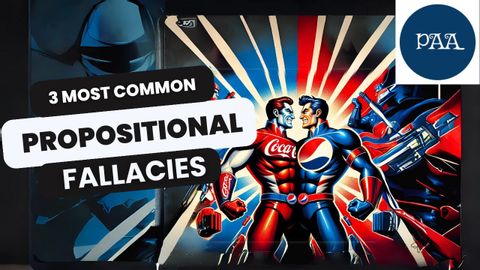3個最常見的命題形式邏輯謬誤: 定義,分類,例子(3 Most Common Propositional fallacies (With coke and pepsi debate examples))
 沒有此條件下的單字
沒有此條件下的單字US /pəˈtɛnʃəl/
・
UK /pəˈtenʃl/
- adj.可能的;潛在的;潛在的
- n. (u.)潛力,潛能
- n. (c./u.)潛力;潛能;潛在候選人;勢
US /ˈkɑnˌtɛnt/
・
UK /'kɒntent/
- adj.滿足的;滿意的
- n. (c./u.)內容;主題;內容;滿意;內容 (數位);含量
- v.t.使…滿足
- v.i.同意
US / dɪˈbet/
・
UK /dɪ'beɪt/
- n. (c./u.)辯論;爭論;辯論會
- v.t./i.思考;盤算;辯論
US /ˈdɛmənˌstret/
・
UK /'demənstreɪt/
- v.t./i.顯示;表露;遊行;演示;證實; 展示

